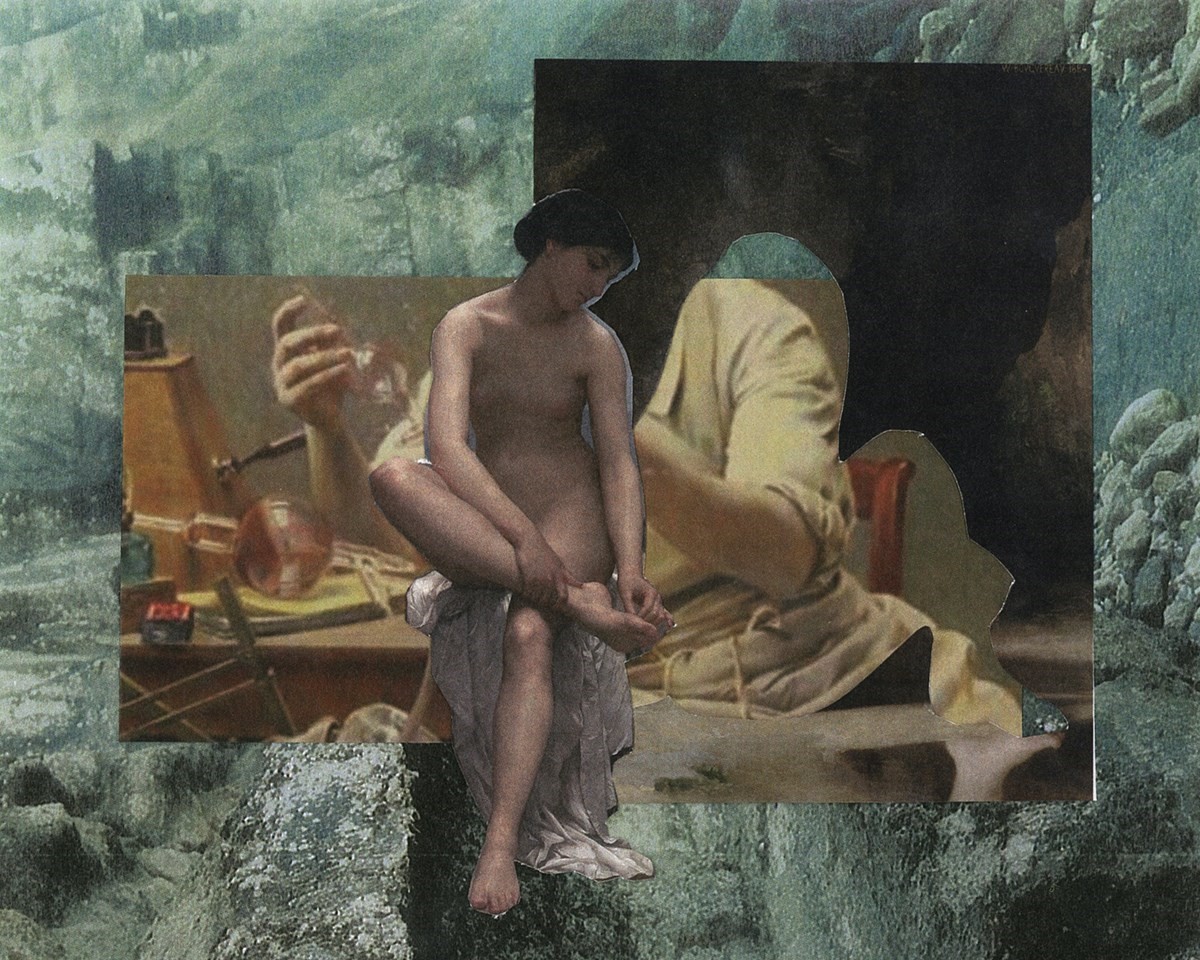Over the past few months, my conversation – both dinner table and otherwise – has been completely monolithic. The first couple of months were dedicated to discussing my hideous state of ill health, and the fact that, at the start of June, I would be spending seven days visiting the mystical health retreat known as The Original FX Mayr Health Center. The latter have been devoted to effusing about its impact on my physical and mental wellbeing, and coercing everyone I meet into promising me that they too will at least look into booking a week there. It would, perhaps, put a stilt in my conversations if I worked in any other industry – but it seems that the Mayr clinic is familiar to nearly everyone who works in fashion; Juergen Teller has done a fashion shoot in the forests that surround its wooden walls; Carolina Herrera was arriving just as I was finishing my final day; models, and writers, and stylists, and makeup artists seem to flock there in between fashion weeks. The managing director, Gabriella Schnitzler, used to be the CEO of Prada Northern Europe; before that, she was seven years as MD at Louis Vuitton Germany. Even if I hadn’t been so desperate, I would have been quite up for visiting for the people-watching opportunities alone. But I was completely desperate.
A little backstory: I have an abundant assortment of physical maladies. I’m coeliac, have all sorts of co-morbid health and autoimmune conditions, and I’ve been to every doctor, healer, physio, and nutritionist around. I practiced yoga daily for years, until my body stopped being able to do that. I don’t eat gluten (of course), I cut out refined sugar for a year, I ate raw for six months, gave up caffeine, tried the FODMAP diet (avoiding short chain carbohydrates that are poorly absorbed in the small intestine), and my body was still in a rapid state of decline. By the time I arrived at the clinic, a strange old golf hotel on the Austrian/Slovenian border, decorated with grotesque seventies carpets and the abundance of pine that you’d expect from such a locale, I was hardly able to do anything, and I had prepared myself to embrace whatever bizarre treatments were imposed upon me. Because that’s the main thing about the Mayr: it’s not a luxury liedown – it’s a bit more like an endurance test, where you spend seven, or ten, or 21 days fasting and hiking around the forests, seeing an assortment of doctors (you see your primary every morning) and sitting in saunas.

Food is, famously, scarce: after my first meal (which was, incidentally, small but lovely: a couple of slices of beef with some very soft-boiled vegetables), I was put onto a diet of a boiled egg for breakfast and then clear broth for the rest of the days, to supposedly give my digestive system an opportunity to rest. “No raw after four” became a mantra for us all: you aren’t allowed to consume anything remotely digestively challenging during the evenings, either during your stay or for several weeks after. The diet is the most militant aspect of what is termed “the cure” (and is determinedly based on the original Dr Mayr’s principles for healthy living), and there is absolutely no room for manoeuvre: you are set a diet by your doctor on the first day and it is to be adhered to, consumed in a communal dining room where silence is expected and one is instructed to chew any solid food you might be given at least 30 times. Even if you beg, the waiters won’t give you more food (I tried for a cracker when, on day three, I was overcome with hunger). There was a rumour going around that, last year, a particularly weak-willed man cheated and went to the golf course across the road for a hamburger. Apparently, he was asked to leave. The closest that I got to rebellion was sneaking out in one of my new friend’s cars, visiting a local town (Klagenfurt: it was pretty, all the buildings were pastel-painted) and getting a sparkling water with a slice of lemon and lots of ice from a café. That, and the fact that I would walk up a hill to have a cigarette every so often and then spray myself with a scented chakra spray before returning to the chalet, in the same manner that I employed as a teenager with Charlie Red or Impulse. Smoking was, of course, completely discouraged, but I had to have something.
Then, throughout the day, drinking herbal infusions of varying supposed health benefits was emphatically encouraged, as were morning Epsom salts, as much tepid water as you could consume, and attending daily lectures on nutrition or health or whatever happened to be going on (one evening, Dr Domenig – the director of the clinic, who has been responsible for its medical modernisation over recent years – brought his local choir in to sing Austrian folk songs: it was great). My lovely doctor gave me so many different remedies – both homeopathic and otherwise – to consume at varying points throughout the day that simply managing to take them felt like a day’s work. But that was all; you weren’t allowed to do actual work, or really meant to use the internet, were told “to relinquish control of everything” – but, besides that, you were encouraged to do whatever your body needed, to nap between the endless schedule of massages or therapies, to maybe speak with the other people staying. “Resonance” was a word bandied about a lot, the idea of connecting with other residents, or your doctors and therapists. “Mindfulness”, too, achieved through meditation or yoga classes (the yoga was good: yin and restorative). There was a life-coach on hand – a man I sat next to every ‘mealtime’ said that he’d been coming for years, and that she’d helped him change everything. There were a surprising amount of men there: bankers, mainly, although apparently Michael Gove goes, too. It goes without saying that visiting Mayr doesn’t come cheap, so its clientele belong to a predictably specific group – overworked and affluent – but everyone was attending for different reasons, from seeking health solutions to, strangely, a more spiritual salvation. My mealtime companion had just given up his job as an investment banker, and was thinking of what to do next. He thought that this year, the Mayr would give him the mental clarity to decide.

Alongside that, plenty of people also go to the Mayr for simple weight loss – of course they do, you are essentially starved the entire time that you are there – but Dr Domenig was insistent that was simply a secondary benefit: “you can only lose 1.5 kilos in a week” he told me on my first day, dispelling any myths about dropping dress sizes during my stay. Actually, I lost loads of weight, simply because the weird swelling that had taken over my body dropped off as soon as we discovered that I was having an auto-immune response to casein, the protein in cow’s milk, and cut it out of my diet. That hadn’t been worked out by any of the myriad doctors I’ve seen over recent years, so I don’t know how the very new-age approach that the allergy doctors took to my intolerances worked – I had a load of glass vials put on my stomach and then had to stretch my arms out while their respective lengths were measured, or something like that – but it did. In a more medical sense, my blood tests showed some new deficiencies (my damaged body hasn’t been absorbing all sorts of nutrients recently), the best chiropractor that I have ever seen realigned my pelvis so that my internal organs were no longer being distorted and left susceptible to endless infections and ulcers, my doctor talked me through some changes to my diet. The tinctures and remedies that I took eight times a day cleared up a particularly resilient infection that is still yet to return.
When I write it down, it doesn’t sound that revolutionary, but it was – not just for me, but for plenty of the people I was there with. Some of us met up about six weeks after leaving – we went to The River Café, assuming they’d be able to cater for our embarrassingly diverse list of dietary requirements – and everyone was still radiant. I had been at fashion weeks, so my adherence to “no raw after four” had been a little vague, one of the other women was up to a couple of glasses of wine a day, another had reintroduced histamine-heavy fruits into her diet on occasion. Another, who had subscribed to the “fat freezing” on offer, had seen pounds drop off her thighs and was thrilled. We had pudding (well, I didn’t, because I’m deathly intolerant to everything so I had a coffee), which proves that people weren’t living in completely unsustainable abstinence but felt better nonetheless, and we were all discussing our plans to return next year. Two weeks after that, I bumped into the man who I had sat next to every mealtime, the one who’d given up banking, when I was attending a fancy meeting in a fancy place. He ran over to me, shouting about how good I looked. He’d started a new job (to be honest, it sounded fairly similar to the last, but I'm not au fait with the minutiae of banking) but said that he’d never felt so good or been so happy. Without sounding too trite, the same goes for me. For the first time in years, my body feels like my own; it isn’t swollen and sore, and I’m not exhausted and frustrated. I am back at yoga, waking up early, filled (at least, sometimes) with a fabulous sense of zen. It’s been two months, and it’s still working. I’ve opened a savings account for next year’s visit. I'm basically a walking advertisement for it, a sort of satellite PR. Maybe I’ll give up fashion and join Gabriella; she seemed to be having a great time.
The Mayr Basic one-week programme costs €1,250, excluding accommodation; single rooms cost from €195 per night. Visit www.original-mayr.com
Wizz Air operates four weekly flights from London Luton to Ljubljana on Tuesdays, Thursdays. Saturdays and Sundays, with fares starting from £24.49 (one-way including taxes and non-optional charges)
